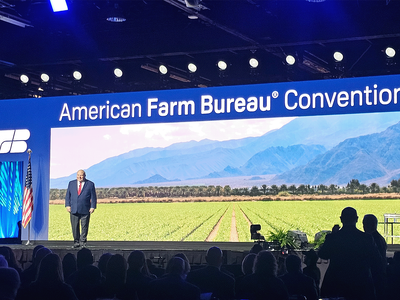Asian Exports & Getting Back to Work
Asian Exports & Getting Back to Work plus Food Forethought. I’m Greg Martin with today’s Northwest Report.
The northwest does a pretty good job of exporting our ag products but getting farm products to overseas markets can take some doing. That's why California farmers work with the Fresno-based Center for International Trade Development to grow their customer base overseas. Director Candy Hansen-Gage says they have learned a few things about Asian consumers.
HANSEN-GAGE: One of the things that we noted when we were in China and Korea was that selling products on the home shopping network is very successful and very popular. So we had quite a bit of interest while we were there from the home shopping network for lack of a better word but that’s where a lot of people go to buy their food products and they’re delivered right to their door everyday.
Well now that the Thanksgiving holiday is behind us it means that Congress should be back in session at least until December 21st. Top of the agenda will be the sequestration cuts set to go into effect and tax cuts set to expire in January, known collectively as the “fiscal cliff.” Of course, the agriculture community continues to wait for word on how a farm bill will be handled in the lame duck session, with House leaders remaining mum into the holiday week.
Now with today’s Food Forethought, here’s Lacy Gray.
The National Agricultural Statistics Service recently released its biannual Farm Labor Report in which NASS interviewed farmers and ranchers across the U.S. to obtain information on the number of agricultural workers, hours worked and wage rates at the national and regional levels. The number of workers hired directly by farm operators in the U.S. the week of July 8th, 906 thousand to be exact, was up nearly nine percent from the same week a year ago. And for the week of October 7th there were 872 thousand workers reported, more than five percent from October 2011. The average farm worker was paid $11.36 per hour in July. That amount is up four percent from last year. Livestock workers averaged $10.89 per hour, and field workers averaged $11.22, with the average number of hours worked per week in October being 41.5. Washington, Oregon, New Mexico, and Arizona had the biggest increases in farm wages. The Northern Plains had the highest average wage for all hired workers at $12.86, whereas the Pacific Northwest’s was $12.45.
Thanks Lacy. That’s today’s Northwest Report. I’m Greg Martin on the Ag Information Network.














